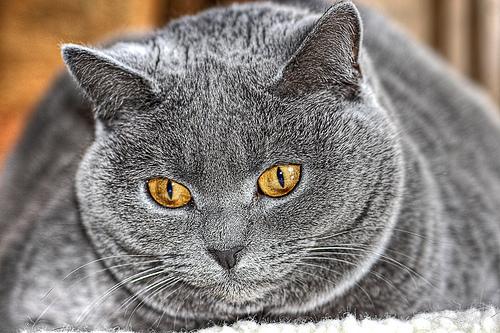
Is your pet fat? Obesity isn’t just restricted to people anymore. Obesity in the pet population is becoming a serious health risk for animals all over the world. This problem is not just a concern for cats and dogs, but for many other animals, like rabbits, birds, guinea pigs, rats, etc.
How is obesity defined?
An obese pet is generally considered to be 15-20% over the optimum weight for its breed or species.
What causes obesity?
In most cases, the owner is responsible for their pet’s overweight condition. It is usually a case of too much food and not enough activity. However, there can be a number of contributing factors involved in a pet’s weight gain:
• Excessive food fed at mealtimes
• Too many extra snacks, treats, and table scraps
• High fat diets
• Lack of exercise
• Age – as animals get older, they are less active and require fewer calories
• Some breeds are predisposed to obesity (e.g. Labradors, Cocker spaniels)
• Many owners of overweight animals are overweight themselves and see feeding as a social activity
• Orthopaedic injuries or disease that prevent exercise
• Some animals have an underlying endocrine disorders such as hypothyroidism or hyperadrenocorticism (Cushing’s disease)
• Cats that are restricted to indoors tend to be overweight
Myth – My pet is fat because I had him neutered.
Neutered pets do not automatically gain weight. A neutered animal will stay at its ideal weight if fed the correct diet and provided with regular exercise.
What are the health risks associated with obesity?
Obesity contributes to a variety of health problems that can ultimately shorten your pet’s lifespan:
• High blood pressure
• Heart disease
• Respiratory difficulties
• Diabetes mellitus
• Back and joint pain
• Hip dysplasia
• Heat intolerance
• Skin problems
• Increased anaesthetic risk
How do I know if my pet is overweight or obese?
Most people can tell if their pet is obese just by looking at it. You should be able to feel the animal’s ribs easily, without pressing too hard, and there should be a visible “waist” when viewing your pet from either the side or above. If you are concerned about your pet’s weight, make an appointment with your vet to have your pet weighed and examined.
What can I do to control my pet’s weight problem?
Weight loss in pets is often a difficult goal to achieve. A veterinarian should be consulted to make a weight reduction plan that includes the proper diet for your pet, how many meals a day it should receive, and what kind of exercise your pet needs to do. There are commercial foods available that are scientifically formulated to reduce weight.
A few tips to get your pet’s weight loss started are:
1. Set realistic goals for your pet’s weight loss
2. Weigh your pet regularly to check if it is making progress with its weight loss program
3. Gradually reduce your pet’s food intake
4. Minimise snacks/treats – if you feel compelled to give your pet treats, give a snack that consists of your pet’s regularly allotted food
5. Increase exercise – playing with your pet regularly is a good way to get them to exercise.
Remember, the sooner this problem is confronted the easier it will be to get your pet back to its ideal weight. Always consult your veterinarian before making any drastic changes to your pet’s routine.
(photo: chefranden)